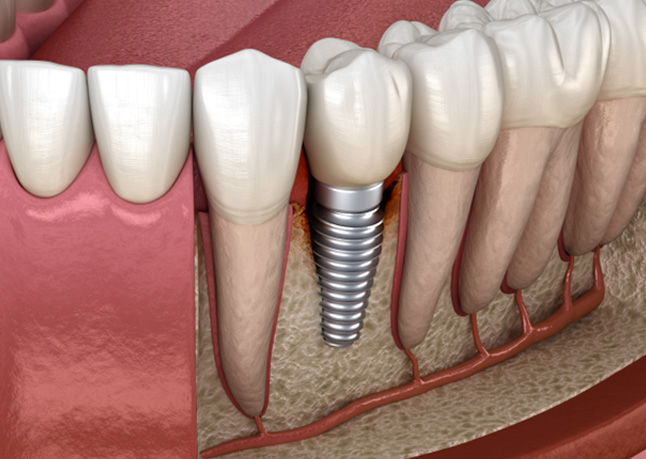Why Do Dental Implants Fail?

The most common cause of dental implant failure is an infection by the name of peri-implantitis. It is a form of gum
disease that occurs when harmful bacteria multiply beneath the gumline and attack the tissue around an implant.
Eventually, this condition can become so severe that the implant loses its base of support. In many cases, poor oral
hygiene is a major contributor to peri-implantitis.
Other potential causes of dental implant failure include:
- Underlying medical conditions. Uncontrolled diabetes, some types of cancer, and certain bone
conditions can be bad for implants.
- Physical damage. Prolonged teeth grinding and clenching or an accident may damage implants.
- Failed osseointegration. In rare cases, the tissues around an implant do not bond with it.
Symptoms of a Failed Dental Implant

Dental implant failure can happen at any time, whether it is days, weeks, months, or even years after the initial
placement surgery. That is why it is so important to keep a close eye on your oral health.
Here are some signs and symptoms that might point to dental implant failure:
- Unusual or severe pain. After you heal from your implant surgery, you should enjoy pain-free
function from your new teeth. Severe or prolonged discomfort deserves professional attention.
- Signs of infection. Pus, redness, bleeding, and gum recession could all indicate
peri-implantitis.
- An implant feels loose. A loose-feeling implant might indicate a problem with the implant
itself or the restoration (artificial tooth/teeth) attached to it.
- Problems eating. Implants should allow you to eat virtually any food without problems.
Challenges when you eat should be checked out by a qualified dentist.
How Dental Implant Salvage Works

As soon as you start to suspect that something is amiss with your dental implants, contact us to request an
appointment. Remember, the sooner you seek care, the more likely it is that the situation can be addressed in a
conservative — and relatively inexpensive — manner.
During your appointment, we will ask about your symptoms and thoroughly examine your mouth. We can also use advanced
imaging equipment to learn what is happening beneath your gumline. After we gather adequate information, we can
recommend your next steps. We might determine that you need something simple, such as some antibiotics or a new
restoration. In some cases, though, it is necessary to completely remove a failing implant. Later, after a healing
period and any required restorative care, you might be able to get a new one.






